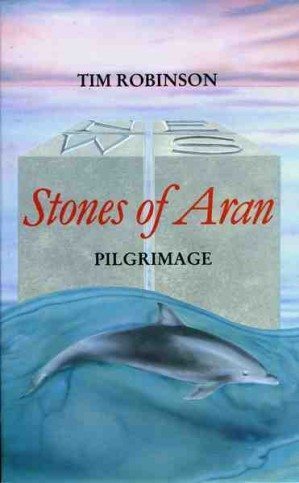
Stones of Aran
Pilgrimage
By: Tim Robinson
Publication Date: 1 Jul 2002
Stones of Aran: Pilgrimage by Tim Robinson
PLEASE NOTE THAT THIS TITLE IS AVAILABLE ONLY AS AN EBOOK
Stone of Aran: Pilgrimmage is, as Robert Macfarlane says in his introduction, ‘one of the most sustained, intensive and imaginative studies of a place that has ever been carried out.’ That place is one of the most mysterious and oldest inhabited landscapes in the world, the islands of Aran off the west coast of Ireland. Desolate, storm-lashed limestone rocks, the islands have been meticulously cultivated for four thousand years, divided up into tiny plots of land that were worked with hard, unremitting labour. Fishing in the open Atlantic seas provided another, lethally dangerous, living. The people who lived there endured and left records in stone, story and oral tradition.
Tim Robinson’s epic exploration of the islands, which have already haunted generations of Irish writers, takes the form of a clockwise journey around the coast of Aran. Every cliff, inlet and headland reveals layers of myth and historical memory, and Robinson makes beautifully crafted observations about the habits of birds, plants and humans. There are walls, cairns and ancient forts whose meaning and function is still not clear. And there is the relentless weather, and the strange properties of limestone, slowly dissolving in the rain. This is an unforgettable, uncategorisable book.
‘The best book ever written by an Englishman about Ireland.’ – Jonathan Keates, Independent
‘Aran is not just an island to him. It is an ultimate place … It is a wonderful achievement.’ – Seamus Deane, London Review of Books
‘Robinson deals with space the way Proust deals with time.’ – Sean Dunne
‘The degree of connection between the landscape and those who named the parts must have been both intense and intimate, and the author succeeds in conveying both the land and the people.’ – Customer review
ABOUT THE AUTHOR
TIM ROBINSON, map-maker and writer, was born in England in 1935. He studied mathematics at Cambridge and worked as a teacher and artist in Istanbul, Vienna and London. In 1972 he moved to the West of Ireland and began writing and making maps. Stones of Aran: Pilgrimage, published in 1985, won the Irish Book Award Literature Medal and a Rooney Prize Special Award for Literature in 1987. Stones of Aran: Labyrinth appeared in 1995, and Setting Foot on the Shores of Connemara was published in 1996. My Time in Spacewas published in 2001. A collection of stories and speculative essays, Tales and Imaginings, was published by Lilliput in 2002. He edited and introduced the widely acclaimed Connemara After the Famine by Thomas Colville Scott (Lilliput, 1995).
| ISBN | 9781843510130 |
|---|
| Weight | 0.00 kg |
|---|---|
| Dimensions | 136 × 215 mm |
| Publication Date | 1 Jul 2002 |
| Format | eBook, 420pp |
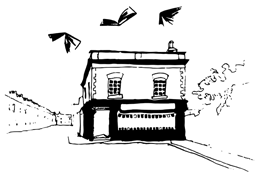
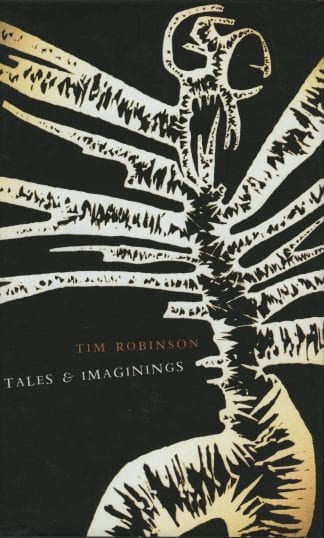
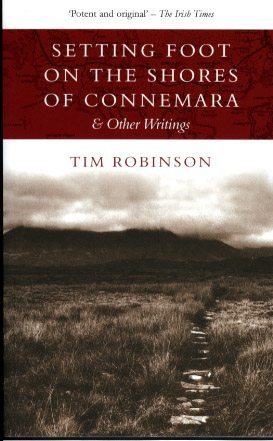
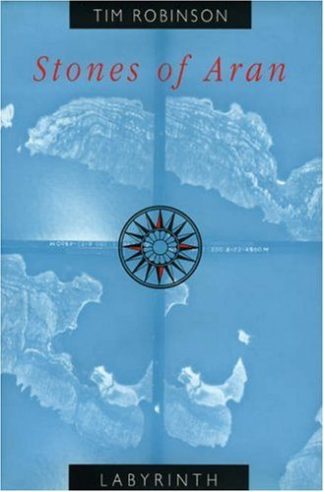

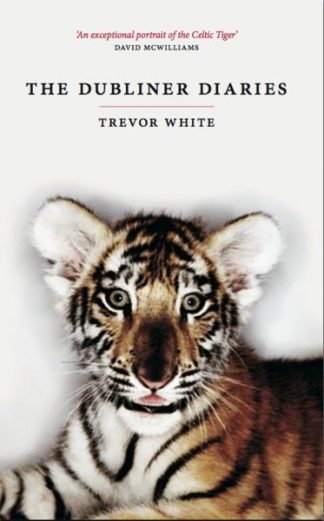
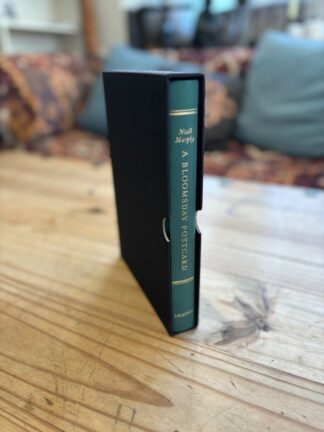
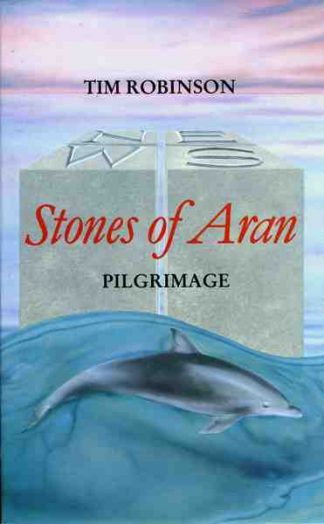
Lilliput Press –
“This collection of 14 shorter pieces by Tim Robinson, mathematician, teacher, artist and cartographer, gives a portrait of the west of Ireland which is unrivalled in recent writing from that country. Its’ integrating device, and central metaphor, is the map. A map, stripped bare, is a distillation of topographical knowledege about an area. Onto this rudimentary two-dimensional scaffolding layer after layer of detail can be added. These are the details of culture, of history, personal memory. Robinson navigates the process of regarding a landscape with the notion of the fractal — the notion of self-similar structures at multiple levels of observation (in “A Connemara Fractal”). He enjoyably talks us through the technical details of making maps, and has some wonderful stories of his mathematical training. I will not attempt to summarize the various chapters but would urge all those interested in landscape, biography, Irish history, coastal walks, fractal theory, natural history archaeology, literary fiction, and “home” (and that, I suppose, includes just about everyone) to read this. In a time when many find themselves living at some distance from their homeplace this book shows how a fresh intimacy with new landscapes can enrich and invigorate. As an Irish emigrant I am both compelled to return to Ireland after reading this and yet am encouraged to persevere in understanding of my new homeplace in the United States. I have loaned this book to friends in Costa Rica, in the American Northwest, and here in Georgia. All have felt its power. It should stimulate the reader to get his larger works on the Aran Islands. Be warned however these books, the present one included, eccentric masterpieces, will make you want to crumble soil between your fingers, circum-navigate your local terrain, and fumble into the interstices of your jaded soul. ” LIAM HENEGHAN
Lilliput Press –
“Tim Robinson could write about almost any subject and it would be a pleasure to read his erudite product. That he wrote this book about Aran is an extraordinarily fortunate event for us. The map he creates with his words has dimensions of time, character, opinion, humor and irony as well as the more usual up, down and across. No piece of earth has ever been more generously dealt with than Aran here in this book and its companion volume: Labyrinth. Mr. Robinson has distilled a place and its people–historical and current–to a deeply satisfying draft and serves it with Irish hospitality.” BERT
Lilliput Press –
“This review is also a personal note: my branch of Clan Mullen came to America from Aran in the late 19th century, which is what led me to Robinson’s books, “Stones of Aran.” “Stones of Aran: Pilgrimage” is Robinson’s description of the island as he makes a circuit of its shoreline.
Although the title “Stones of Aran” might suggest that the topic is geology or, perhaps, geography, “Pilgrimage” is actually an eclectic mix of these plus paleo-biology, ornithology, botany, anthropology, archaeology, etymology, mythology, cartography, and maybe some others. Robinson claims professional authority only in the last of these, having one time mapped Aran and parts of neighboring Connemara. To the rest of these fields he brings the energy of a keenly interested amateur, and he attempts to fuse from them the shoreline’s gestalt. He deliberately and explicitly eschews photography, preferring to assemble pictures from nouns and adjectives, which he deploys in profusion and with technical specificity.
Occasionally this approach is irksome. Robinson admits to needing a bird identification book, for example, but he then rattles off species as if the reader were an ornithologist. In such passages I substitute “bird” for the various and mysterious names and practice my speed reading for a few paragraphs. A reader more at leisure might enjoy the delay of looking up all these curiosities in his own bird book.
There is no plot in this volume, no story line whatever, except when occasionally Robinson relates local legends, lore, or hagiographies of the saints. Rather the order of the narrative is an exploration of space, arranged sequentially as one walks (Robinson admits to occasionally pedaling to points on the shore, but in the descriptions he is always on foot) from the eastern-most point of the island, westward along the south shore, round the western end, then back along the north shore. Robinson is never an actor in this walk, only the narrator. The reader observes the circuit through Robinson’s eyes and mind. One never reads or in any way derives a sense of his aching feet, watery eyes, or chilled limbs. It is a God’s-eye view.
There is, in fact, something extremely impersonal in the narrative. Robinson rarely writes of contemporary people in Aran, and when he does–as, for example, when he hitches a ride from a couple of lobstermen to an offshore island–the description of the event is written in “first-person-remote,” i.e., with an aloofness of attitude that leaves the reader feeling like he is watching events from a long ways off through a telephoto lens. Similar to listening to news on National Public Radio, it’s as if some omnipresent authority is floating serenely, invisibly, and untouched above earthly things, ultimately objective, neither affecting nor affected by events below. Robinson similarly seems to want Aran and her people unaffected by his passing there.
Though any one section of the book can be accused of being too introspective, of containing too much arcana, or of being an egotistical exercise of linguistic nicety, what emerges with time and patience is an image of Aran that is at once general and intimate. It is similar to the sense you might get from looking out upon any landscape: you see a variety of trees, a roadway with a culvert diverting a stream underneath, the ruins of a barn encrusted with creeping vegetation, old pasture going to weed alongside a river, a hillside rising away to over-looming cliffs. You can take the parts separately–identify the various trees, look up who once owned the farm, climb the cliff, paddle the river–but your eye takes them together at a glance, and together they make one image. So it is with “Pilgrimage.” From the disparate parts Robinson creates a whole, and you come to feel as if you “know” Aran in some way, and probably in a better way than you would from reading a travel brochure and looking at photographs.
~~~
Family trivia:
Members of Clan Mullen enter the narrative at a few points, all of them related to Cousin Pat of “Man of Aran” fame. Whereas the Wikipedia entry for his actress daughter, Barbara, tells of Pat leaving his wife and ten children in Boston, Robinson says it was only three children, two daughters and a son, and the son, “PJ,” returned to Aran with him. (This accords with Cousin Pat’s account in “Man of Aran.”) Robinson also accounts for Pat Mullen’s employment while he was in America–“rambling, labouring, and moonshining”–and he reports that he left his wife in Boston “running an illicit drinking-house.” And religious skeptics among us may be interested to learn that Pat’s branch of the clan were notorious for impiety. “Johnny Mullen, father of Pat, was considered such a social and religious heretic that it seemed doubtful if Father Killeen, the parish priest of the day, would permit his burial in God’s ground….’If we can’t bury him we’ll pickle him!’ Pat is said to have said, but instead they forestalled the priest by bringing the corpse here [“here” being Poll na Marbh, a place where unbaptized infants and strangers-not-known-to-be-Catholic were interred] and burying it secretly, replacing the sods, erecting no cross, but taking `marks’ for the spot…so that none but they would be able to find it.”
Robinson, who helpfully translates Irish place names throughout, inadvertently gives some clue to the etymology of the name “Mullen.” There is a knoll near the east end of Aran called An Maoilin: “The word `maoil’ in Irish means among other things a hillock with a flattish top; it cognates with dozens of others denoting things blunt, bald, roofless, or low-topped in some way.” I have always heard that the name “Mullen” derived from Irish for “The Bald One” or something like that. Indeed, I have here a postcard from a friend, who brought it from Ireland, showing the Mullen coat of arms and explaining that the name derives from the Irish word for “bald.” With my usual distrust of such authoritative pronouncements (which in my experience are often no more than reiterations of some long-ago error), I wonder if “Mullen” might just as likely derive from Aran’s “maoil,” or “flattish top.” Perhaps our family of modern warriors spring from an ancient ancestor who went into battle sporting not a bald pate, but rather that frightening 80’s hairstyle, the “mullet.”” F MULLEN
Lilliput Press –
“Obviously, it takes a somewhat rum fellow, a mathematician and an artist and cartographer, to settle down and become a denizen on a few relatively barren, sparsely populated limestone rocks off the west coast of Ireland, to do so and to write a book exploring the minutiae of the language, folklore, history, geology, archaeology of said outcrops whilst making what he is pleased to call a “pilgrimage” around the perimeters of them.
The results of this pilgrimage range from the pedantic to the poetic. The careful mathematician in Robinson scrutinizes all these different aspects of the the surrounding flora and fauna, folklore and myth, that, frankly, at times, make reading the book what this perambulation obviously was for Robinson much of the time, more than a bit of a slog. One certainly learns quite a lot, but is it worth knowing?
Robinson, as it happens, and this to me is the heart of the book, is continually asking himself this question. Often, he will simply break in the middle of what he is describing or explicating to ask himself the equivalent of – “What am I doing here?” – both in regard to making this foray on foot and to recording his experiences and his researches into Aran’s archaeology, geology and history, both actual and apocryphal.
There are brilliant, epiphanic poetic flashes, which, to me, constitute the finest parts of the book, such as:
“I have visited the place too on a calm summer night by a full moon that laced the sea with mercury all the way to Clare, and in a wintry dusk when the screaming choughs were blown by like scraps torn out of the night, and a crescent moon and evening star followed the sun down into the western cloudbanks.”
A “chough” is a bird of the crow family.
What one comes away from the book with is a sense of a man trying to find his place in the world, to make some sense of it all. Towards the end here, Robinson recounts the peroration of a cleric on the book of Ecclesiastes, to which Robinson contemplatively rejoins:
“Preachers induce such moods, the better to peddle their teleological pick-me-ups. If one declines these, the only cure is to walk on, out of the state in which nothing matters into its mirror image, more vivid like all such, in which everything matters.”
The book can be viewed as a meticulous description of the oscillation on the author’s part between these two extremes on his scholarly tramp, an oscillation to which all impressionable, contemplative readers will respond, and recognise in themselves.” DANIEL MYERS
Lilliput Press –
“Tim Robinson published this account of the largest of the three islands that sit at the entrance to Galway Bay, “Arainn” in the island’s own speech, in 1986. He had gone to live there in 1972, and this book is the remarkable distillation of his experience, as well as his exploration of its past. The islands are the last stronghold of the Gaelic language. The particular island that is the topic of this book is roughly 8 miles long by 2 miles wide. The humans that have chosen to live here have made significant adaptations to their environment. I know of only one other book that I could compare it too, one that also examines a Celtic heritage, a bit further south, in France’s Brittany. It is Eleanor Clark’s “The Oysters of Locmariequer.” Like Robinson, Clark examines a very small place, and reports on the “unsummable totality of human perspectives” to use Robinson’s phrase in his first chapter.
This book does not exhaust by any means what Robinson has to report about the island. There is a companion volume, Stones of Aran: Labyrinth (New York Review Books Classics) “Pilgrimage” takes the format of a walk around the island’s circumference; “Labyrinth” is an exploration of the interior. For sure, there are plenty of diversions along the way. The author immediately draws you in, particularly for Americans suffering from “intelligent design” and “creationism” with a discourse on a timescape without signpost, the cosmology of the universe, with a nod to that famous date some folks think the story all began, 4004 BC.
Robinson’s approach to that “unsummable totality” as well as his own erudition are dazzling. He is not one to have gotten trapped into the “how many angels on a pinhead” arguments of a cramped and narrow intellectual discipline. He ranges over disciplines as varied as cosmology, geology, botany, sociology, history, linguists, economics, anthropology and literature. For example he describes with remarkable prose the types of gulls that inhabit the cliffs around Aran, and then goes on to describe the death-defying techniques that the “Cliff men” evolved to hunt them. Then he launched into true pyrotechnics of prose with: “…let the ocean dance in it, and the cliffs above step back in wide balconies to accommodate the thousands who will come to marvel at this kinetic-conceptualist, megalominimalist, unrepeatable and ever-repeated, sublime and absurd show of the Atlantic’s extraction of Aran’s square root!”
In other chapters he examines the mythology, and actuality of the settlement of these islands. Robert Flaherty’s 1932 movie, “Man of Aran,” is a valuable referral source for Robinson, and he repeatedly references it in his book. In terms of the economics of the island, it was always a struggle, particularly agriculture, which was supplemented with fishing, particularly of sharks, for their oil. Kelp played a major role in the islands history, from it use as a source of iodine, as well as it being the principal source of fertilizer, which made possible the growth of crops in this stony soil.
Religion is also an integral part of the island’s history and present, with a pithy observation by Robinson: “Priests of course have always protected their retail monopoly of supernatural benefits by maligning even the pettiest rival outlets; the coins probably found their way into the Church’s pocket and the poor peasant was told to have no further dealings with the Devil…”. Meanwhile, the author seems to have a Faulknerian view of history: “I am no disinterested historian; I study the past only to amplify my greedy awareness of the present.” As for reality: “The correct way of contacting the depths of reality are just two: either to throw yourself over the cliff into your choice of mysticisms, or to do your time in one of the cultural armies, scientific or artistic.”
A couple reviewers said the book could not be categorized. In some ways the observation is correct, but I would demure. There is at least one fit: it is a masterpiece.” JOHN JONES
Lilliput Press –
“This book takes the reader on a journey around the coast of Arainn – the largest of the Aran Islands off the West coast of Ireland. The level of detail in the work seems daunting at first, but as the book builds you become used to this style. Every headland, inlet and shore has been named and there is often a story or two (or three) to account for each name.
The degree of connection between the landscape and those who named the parts must have been both intense and intimate, and the author succeeds in conveying both the land and the people. The landscape of the island is fragmented into section by the nature of its geology – limestone naturally weathering into blocks along lines of the weakness created when the rock itself was formed. The book itself seems to take a similar structure. The journey around the island is the books underlying geology, which is presented in a sequence of sections, each part of the whole but also distinct from the rest of the work.
We may be losing our understanding of the human connection to landscape and place, but this book is as clear a statement of the power of place as one could wish to read.” STEWART M
Lilliput Press –
“This is an unusual book being a mixture of guide book, geology text book, history, ethnology, Irish language philology and etymology and with smatterings of folk lore and personal musings and a little botany. However the author ably amalgamates and synergises these diverse themes to produce an interesting book about Arainn the largest of the Aran Islands off the west coast of Ireland. He describes, in some detail, his walking (with a little cycling) completely around the island’s coast. I enjoyed reading the book and commend the use of a so-called ‘minority language’ but have to say it is easy to become very confused by the plethora of principally Irish language place names. The maps in the Kindle edition I read are rather small and a glossary and pronunciation guide would have been helpful.”